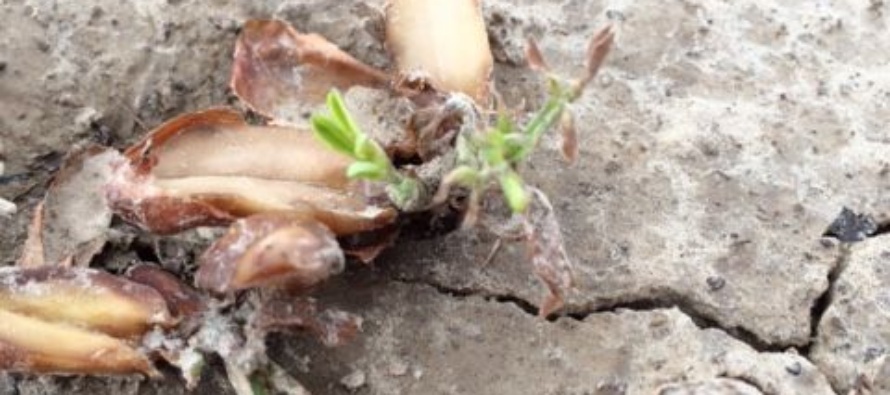Plant Stand Effects on Peanut Yield

Related Articles
- Evaluation of Peanut Varieties in Mississippi, 2010 0
- Evaluation of Peanut Prescription Rx Program in Mississippi 0
- Evaluation of Tillage Systems as Related to Peanut Yield 0
Latest Tweets
This planting season has been pretty good to peanut growers overall. While rainfall has been sporadic across the state, most of us have had several long, dry windows to get peanuts planted since about April 25. Having said that, there have been a handful of issues that have come up that have reduced plant stands to levels below what we would consider optimum. Valor herbicide (and now generic flumioxazin products) is always seen as a blessing and a curse. It does a fantastic job of keeping fields clean if we get it applied and activated on time, but we’ve come to expect some level of crop injury when using this product. Sometimes, this injury can be severe; primarily when a heavy rainfall event occurs when peanuts are cracking the ground or have just emerged.

Figure 1. Peanuts that are beginning to “crack” the ground.


Figure 2. Valor damage on peanuts that received a large rainfall both at and just after cracking.
It’s uncommon for this injury to significantly hurt stands, but I’ve observed it happening in low-lying areas that are subject to saturation after heavy rainfall events. This, more than anything else I’ve observed in the state the last three seasons, has reinforced the need to get peanuts up on a bed . Outside of occasional seedling disease related to hot, dry conditions, stand issues have nearly always been somehow related to saturated soils, a problem peanut planted on beds can help alleviate. For more information on peanut seedling disease and stand loss issues, click here.
My typical recommendation is to plant 6 seed/ft of row in single rows and 6.5 seed/ft of row in twin rows, with hopes of getting 4 plants/ft of row in single rows and 4.5 plants/ft of row in twin rows. This recommendation comes from my time at the University of Georgia working with Dr. Scott Tubbs, Dr. John Beasley, and many others. It is well established that higher plant stands reduce the severity of tomato spotted wilt virus (TSWV), a thrips-vectored tospovirus that nearly destroyed the peanut industry in the deep south. The seeding rate and plant stand recommendations that we currently use are, at least in part, an artifact of the time when TSWV was so prevalent. Now, varieties we plant have such good resistance to TSWV that the disease is mainly an afterthought. While I’m not advocating for a reduction in seeding rate (I like having a safety net there), recent work with plant stands has shown us that we can achieve equal yields with stands below that 4-4.5 plants/ft of row level.
Below is some work I did at the University of Georgia on plant stands.
| Plant Stand | Pod Yield |
| Plants/ft | Lb/acre |
| 2.25 | 5745 c |
| 3.00 | 5795 bc |
| 3.75 | 6151 a |
| 4.50 | 6098 ab |
| SEb | ± 157.0 |
Table 1. Plant stand effect on peanut yield in peanuts planted in twin rows.
As you can see, while yield was highest at 3.75 plants/ft and above, it was reduced by only a small amount at 2.25 and 3 plants/ft, giving cause for optimism when plant stands are below our target.

Table 2. Plant stand effect on peanut yield in peanuts planted in single rows.
Similarly, in single rows, yield continues to go up with stand, but not at levels that we might expect. This again makes us optimistic that stands below 4 plants per foot can provide good yield.




Let me tell You a sad story ! There are no comments yet, but You can be first one to comment this article.
Write a comment